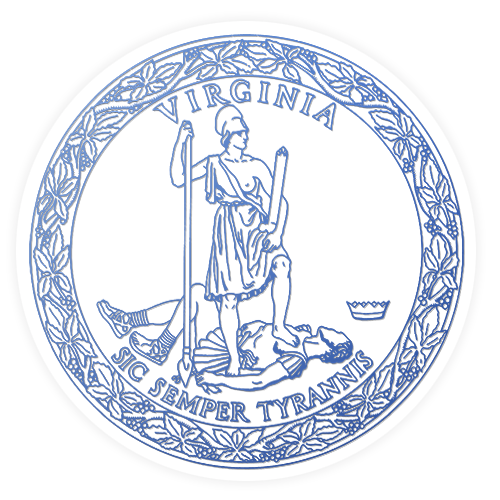
HAMPTON—Governor Ralph Northam today announced that the United Nations Educational, Scientific and Cultural Organization (UNESCO) has designated Fort Monroe as a Site of Memory Associated with the UNESCO Slave Route project. Fort Monroe shares this distinction with more than 50 other sites and entities linked to the history of the transatlantic slave trade. A historic marker will be placed on the grounds of the forthcoming African Landing Memorial at Fort Monroe. Governor Northam made the announcement at the newly-dedicated Fort Monroe Visitor and Education Center.
“Fort Monroe is among the most significant historic sites connected to the institution of slavery, African American history, and the struggle for freedom,” said Governor Northam. “In order to tell the full and true history of our Commonwealth, the stories of the people and the events that took place here must be more present in our collective narrative. This UNESCO designation is a meaningful and appropriate recognition of Fort Monroe that will anchor its place in history and support our ongoing work to promote a true accounting of the Black experience in Virginia and in America.”
In August of 1619, the first enslaved African people arrived in the English colonies in the Americas on a ship called the White Lion, landing at Point Comfort, the present site of Fort Monroe National Monument in Hampton, Virginia. This set into motion the enslavement of both Africans and American Indians, and extended the Portuguese and Spanish Transatlantic Slave Trade to North America. Fort Monroe later became a refuge for those escaping enslavement, and was one of the first places enslaved people were granted freedom during the American Civil War.
The designation as a Site of Memory associated with UNESCO’s Slave Route project is the latest in the Commonwealth’s ongoing efforts to honor and promote the historical significance of Fort Monroe. In 2019, Governor Northam ordered the removal of the name of disgraced Confederate president Jefferson Davis from an iron archway and memorial park within Fort Monroe. Interpretive signs were installed to contextualize the arch, the park, and the full history of Fort Monroe, and the letters were placed inside the nearby Casemate Museum. Later in 2019, Fort Monroe hosted a series of events to commemorate the 400th anniversary of the arrival of the first enslaved Africans in English North America in 1619. The Fort Monroe Visitor and Education Center opened in 2020 with new interactive exhibits that help chronicle this history.
A public art memorial to the trials of the enslaved Africans who landed at Fort Monroe is currently under construction. In 2019, Governor Northam proposed, and the General Assembly agreed to allocate $500,000 toward the African Landing Memorial project. The artist has engaged extensively with the public to give the community a chance to express their opinion on what this memorial project means to them, and what experiences should be included in the design. Learn more at 1619landing.org.
“Fort Monroe is an ideal site to explore the history of the African Black Diaspora, particularly the history of the African landing at Point Comfort, and the evolution of slavery in practice and law,” said Eola Dance, Acting Superintendent at Fort Monroe National Monument. “This partnership park provides a unique opportunity to tell the unvarnished truth about the disruption of slavery to Africans, the diversity of people who contributed to the making of America; the resilience of African Americans in the quest for freedom, equality, and justice; as well as the desire and need for reconciliation and healing across communities today.”
Launched in 1994, UNESCO’s Slave Route project: Resistance, Liberty, Heritage was created to break the silence surrounding the slave trade and slavery across all continents. The project has contributed to a better understanding of the causes, forms of operation, stakes and consequences of slavery in the world.
“I congratulate all of the dedicated community groups and Governor Northam’s office on the designation of Fort Monroe as a Site of Memory Associated with the Slave Route,” said Dr. Jane Landers, United States Representative of UNESCO’s International Scientific Committee and Director of the Slave Societies Digital Archive. “As the site where the first enslaved Africans were introduced into the English colonies in 1619 and where the Union Army more than two centuries later sheltered self-liberated people, Fort Monroe holds a unique place in our nation's history. This is an effort I hope will be a model for our historic sites in our country.”
Under the guidance of UNESCO’s International Scientific Committee, the Slave Route project continues to encourage new research in neglected regions, define new approaches for the teaching of this history, and elaborate new guides for the identification, preservation and promotion of sites and itineraries of memory related to the slave trade and slavery. In addition, the project promotes the contributions of people of African descent to the construction of contemporary societies.
“This historic site is uniquely positioned to break the silence surrounding Virginia’s role in slavery and create an educational space to understand the consequences of slavery and the contribution that enslaved people made to shape the modern society,” said Fort Monroe Authority Executive Director Glenn Oder.
Fort Monroe has received several national designations to recognize and protect the area’s important heritage. In 1960, Fort Monroe was designated a National Historic Landmark and in 1966, Fort Monroe was listed on the National Register of Historic Places. In 2011, President Barack Obama signed a proclamation designating Fort Monroe a national monument.
Photos from today’s announcement can be found below.
# # #